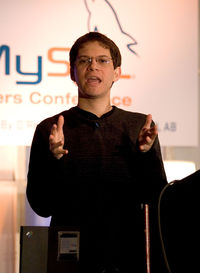Virtualize or translate?


If you want to run both Windows and Linux applications you have two options:
- You can virtualize, creating a virtual machine with a variety of programs (ask Dan Kusnetsky); or
- You can translate, using Mainsoft's Grasshopper or one of the other fine products we discussed last week.
"Virtualization will allow you to consolidate an application and its required operating system onto a single box, but it does not allow you to move between operating systems," Jeff Smith, vice president of open source and Linux middleware at IBM, said after the Race to Linux contest.
On the other hand, some software licenses (Microsoft) explicitly reject translation, noted Miguel de Icaza (right), who helped found Gnome and now runs the Mono project at Novell, blogging about it at Tirania.org.
"The reality is anyone who's not in the operating system sales business doesn't care where their software runs. They want to be on as many platforms as possible," he said. But read your license carefully anyway.
Translation takes more work up-front, but virtualization requires more resources. Either method works.
The question is, of course, which do you use? And what might change your choice?